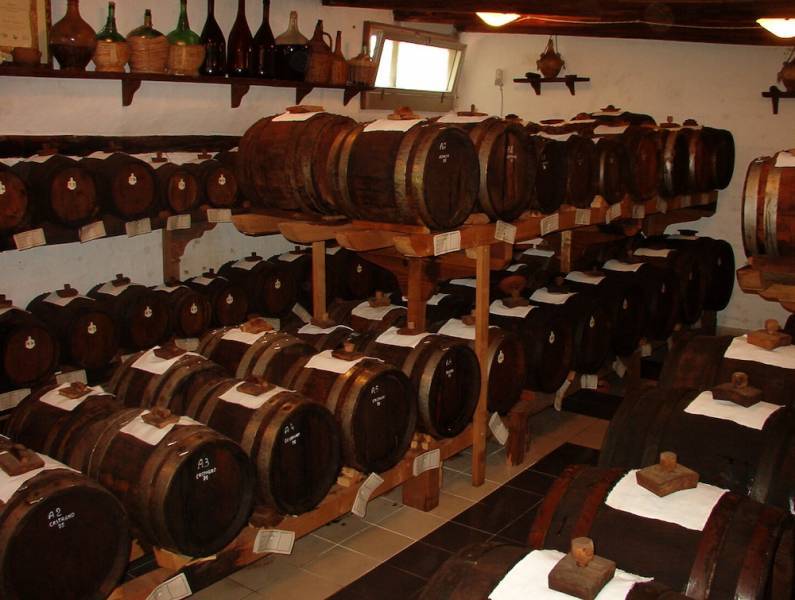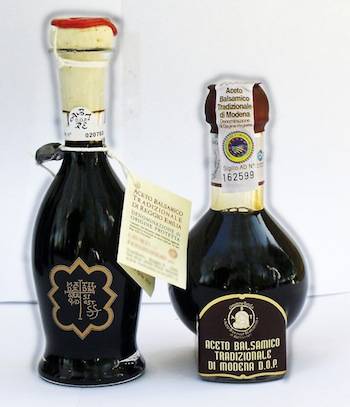What Balsamic Vinegar Is
Records show that, for as far back as we can tell, the people of Modena and Reggio Emilia have been making a particular type of vinegar. Records also show that that vinegar was unknown outside of the provinces and that the techniques of production and aging have been passed down through the centuries virtually unchanged.
A long history
The first reference to balsamic vinegar was made in the city of Modena at the end of the
16th century.
But ‘balsamic vinegar,’ as it refers to aged vinegar obtained from cooked must and considered a luxury good, did not appear until a document from the 18th century in
the records of the Secret Ducal Cellars of Modena.
In the 19th century, the difference between balsamic and other vinegars became widespread knowledge, and steps were taken for industrial production and global commerce.
Still, even though the method is the same, every producer in the region jealously guards his or her own recipes, so that each generates a unique, inimitable product.
Even within a common qualitative framework there are as many different types of balsamic vinegar as there are producers. They are not all the same Today you can find balsamic vinegar in any supermarket. However, what is often on the shelves is sadly not Aceto Balsamico Tradizionale (Traditional Balsamic Vinegar), but an industrial version called Aceto Balsamico di Modena (Balsamic Vinegar from Modena). Or else it is simply an imitation.
The value of the traditional Aceto Balsamico Tradizionale is produced in Modena and Reggio Emilia. The barrels used to age it have been passed down from generation to generation
and were so valuable that they were often used as dowries! Balsamico Tradizionale is only
made with regional grape must that is cooked, fermented and acetified, then aged for many
years through a battery of smaller and smaller barrels of different woods. In actuality, this balsamic is vinegar in name only; it is a ‘condiment,’ since it has a level of acidity well
below the 6% minimum for real vinegar.
Types of Balsamic Vinegar:
Every kind of balsamic vinegar has its use. In this regard, we could even compare it to wine.
You wouldn’t want to waste a $300 bottle as vinaigrette on a salad or drizzle a $10 one over
some Parmigiano Reggiano! The four main classifications are:
Aceto Balsamico Tradizionale
Traditional Balsamic Vinegar is is considered to be the best for its rich flavor. Its main
characteristics are: the specific onion-shaped bottle with the label of the Consortium, its brown/black color, flavor that is a mix of bitter and sweet, and its thickness seen when poured
out of the bottle. Aceto Balsamico Tradizionale is produced solely with grape must.
- 12 years: Good for eggs, sandwiches, red meat, fish, and seafood.
- 25 years: Perfect for cheeses, desserts, gelato, fresh fruit, or as a digestivo.
- 25+ years: Ideal for tasting a few drops with a small white porcelain spoon
Aceto Balsamico Condimento
These balsamic vinegars follow the same methods of production as the traditional ones,
except for one difference. It could be that the producer is not in the area of Modena, or that
three woods were used instead of the five, or that the aging time was less than twelve
years. Aceto Balsamico Condimento is also produced solely with grape must. They begin
around 20 Euros. This product is perfect for daily use on salad, bread, mozzarella,
tomatoes, and sauces. It should always be used as a finisher.
Aceto Balsamico di Modena
These are industrial vinegars produced quickly, usually in metal vats with wood chips for flavor. These commercial balsamic vinegars are usually a mix of must, red wine vinegar,
sulfites, and some-times sugar or coloring agents. If you want to buy them, I suggest you
always look for the ones with only must and vinegar. Useful for salads and sauces.
Imitations of Aceto Balsamico
These vinegars cannot have the name Modena on the label, but their presentation is sometimes so similar to high-quality versions that it is often difficult to notice the difference. The only way to tell is to look at the ingredients. Aceto Balsamico Tradizionale and
Condimento contain only grape must, while the industrial ones have must and vinegar. The
imitations, however, also contain vinegar, sugar, coloring agents, and other preservative.




































i-Italy
Facebook
Google+
This work may not be reproduced, in whole or in part, without prior written permission.
Questo lavoro non può essere riprodotto, in tutto o in parte, senza permesso scritto.